Seppeltsfield Road, Marananga
B 1880 W.G. Rendall for residence G.S. Hale, Norwood;
later inst St Peter's Lutheran Church, Point Pass; res 1915 T. Geyer;
inst present loc 1918; res 1989 Roger Jones.
1 manual, 3 speaking stops, 1 coupler, tracker. Man: 8 divided .4.4.
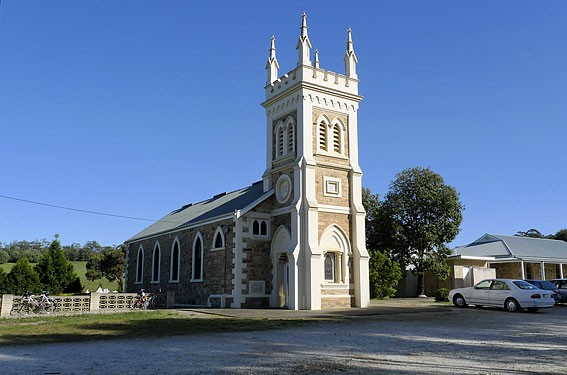
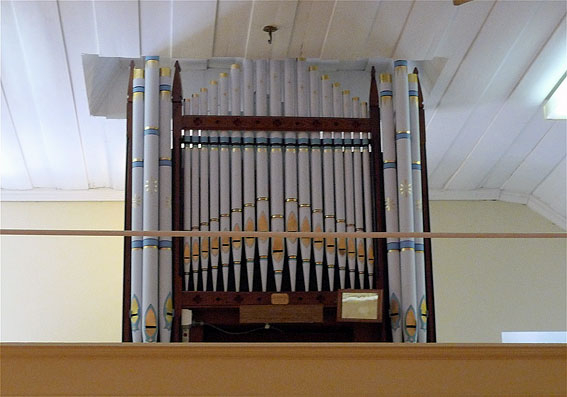
From Historic Organ of the Barossa Valley, Volume 2:
The district of Gnadenfrei was settled between 1845 and 1850. Originally aligned with the Langmeil congregation, the German settlers formed their own church in 1853, the present building dating from 1873 with the tower added in 1913. The nomenclature act of 1917 changed many German names and the district has been known as Marananga since that date. This organ was built in 1880 by W.G. Rendall (Adelaide) for Mr G.S. Hale, a bootmaker by trade*. At some later stage it was installed in St Petri Lutheran Church, Point Pass, and later, after reconditioning by Theo Geyer of Tanunda, into its present location in 1918. It has been the subject of numerous rebuilds, and only one rank of the original pipework (the Flute 4') now remains in the organ. Despite this, it remains an organ of great charm.
W.G. Rendall was an amateur builder with grandiose schemes. Had he been a better financial manager, he may have been more successful. His major work completed in South Australia is to be found in the Uniting - formerly Congregational - Church, in Brougham Place, North Adelaide.
| Manual Stopt Diapason Stopt Bass Principal Flute Treble Flute Bass Octave Coupler |
8 8 4 4 4 |
TC TC to cc open stopped |
* Later evidence provided by David Shield (April 2009) reveals that G.S Hale was a music teacher and organist - it was his father who was the bootmaker.
From
the 2009 OHTA Conference Book,
David Shield wrote:
The
organ at Marananga has a somewhat clouded history with all aspects of its
provenance needing further elucidation.
It is reasonable to assume that it was constructed by Walter Rendall and
probably for the Adelaide music teacher G.S. Hale. However, it is also apparent that it was acquired and used
at St Peter’s Lutheran Church, Point Pass late in the 19th century before it
came to St Michael’s Gnadenfrei Lutheran Church. This scenario may well be correct though dating the course
of events is far less certain.
One
of the earliest references connecting Walter Rendall to pipe organs is in
1879. At the Annual General
Meeting of the Swedenborgian, or New Church, in January, Rendall offered an
organ that he had for disposal at £60.
The owner preferred a cash sale.
After an inspection and report, the offer was accepted four months
later.1 Described in
the press as “a small organ with pedal swell, by London maker” it was first
used on Sunday 11 May.2
At the quarterly meeting of the church in April 1881, Rendall offered
another new organ, but it was “not considered desirable to disturb the present
arrangements with organ and choir”, so was declined. Perhaps it was this instrument that was purchased by Hale?
The
events surrounding Rendall at this point of time are confusing. He was newly married with young
family. He did not handle money
well. Given future happenings, a
cynic might consider the organ “by a London Maker” was not imported but a ruse
for divesting himself of his own instrument. The ownership is not divulged. Countering this is the fact that he married a niece of
Charles Darwin and his father-in-law would have to have been in on the
deal. Rendall briefly joined
company with John James Broad in May 1879. A dubious factory fire and insurance claim led to censure
but no blame, the partnership dissolving.
In March 1881, the deacons of Brougham Place Congregational Church
accepted Rendall’s tender for a new organ. In April 1883, Rendall had another factory fire involving an
insurance claim. The organ being
constructed at this time was for Holy Trinity, now at St Cyprian’s, North
Adelaide. Perhaps to escape penury
he joined Mr Hamlyn in a partnership in May 1883, already owing £936/8/9 beyond
his means. He was listed as
insolvent in November. Two years
later, Hale takes delivery of an organ from Rendall.
Evidence
that the organ at Marananga was built by Rendall for G.S. Hale comes from the
organ itself. In the first place,
the instrument has a bronze plate with the maker’s name. Curiously there is no date given. When restored in 1989, it was
discovered that there were pencilled inscriptions on both windchest and a pipe. On the pipe it reads “built to the
order of G.S. Hale £70 cash”.3
There the complexity begins.
George
Samuel Hale was the only son of George Hale, of Sydenham Road, Norwood. Although he claimed distant connections
to a Governor of South Australia, his father may have been the village
bootmaker and organist (reed) at St Matthews Church of England, Kensington.4 Born in 1859, George junior was
privately educated then became a pupil of James Shakespeare, organist at Stow
Congregational Church. For more
than 20 years, Hale was organist at Holy Trinity Church in Adelaide. He was an excellent piano tuner and
teacher of singing and music.5
Hale did, in fact, purchase an organ from W.G. Rendall. For practice and tuition, it had two
manuals and pedals and cost £250, a considerable amount for a 26-year-old
bachelor!6 Clearly this
is not the instrument at Marananga.
However this is not to exclude Hale from consideration. On the other hand, he must have been a
very self-confident young man of 21 to have an organ “built to order” in 1880.
On
the assumption that Hale previously purchased a smaller organ, and that it was
replaced in March 1885, the timing does correspond with the opening of the
church at Point Pass in December.
It is interesting to note that the name of R. Mackenzie appears on the
windchest: “R. Mackenzie Organ Builder Adelaide 1882”. Whether this was the actual date, or
the date Mackenzie considered his business was founded in Adelaide is not
known. This does not help the
dating of the instrument. As
Mackenzie also worked with the Lemke organs in the Barossa at this time, it is
highly likely that he could have worked on the organ after 1885. Alternately, Hale’s organ could have
been failing and he asked Mackenzie to correct the faults in 1882. This is an area for yet further
research.
The organ at Marananga was purchased and dedicated in 1918. The details of the process and
personnel involved, however, needs further investigation. It is known that a G.A. Keller had
written to Dodd apparently to dispose of an organ in 1905. The Keller name was prominent amongst
the members at Gnadenfrei Lutheran.
George Keller was on a building committee for extensions to the building
and the erection of the tower to house the new bell. Ed Keller served as organist and conductor of the choir from
1916 till 1927. It is an open
question as to whether G.A. Keller was one and the same as George Keller and it
was he who acquired the organ for Marananga, after restoration in 1915 by Theo
Geyer.7
The architect for the tower was Gerald Seppelt of the local wine family
and B.Freytag, of Tanunda, constructed it at a price of £550.8
The
bell in the tower is made of steel and was donated by Mr L.Schmidt. Made at the Bochumer foundry, Verein,
its mouth diameter is 910mm, its weight 288kg, and it sounds the note C#. In addition to the unusual headstock
that supports it, the bell has at its waist an inscription painted in beautiful
lettering “Mein name ist Sophie”.
Other lettering is less distinct.9 The original bell went to the school.10
Roger Jones rebuilt it again in 1989. This included the supply of a set of
new façade pipes.12 After several rebuilds, only one rank of original
pipework remains (Flute 4ft)
Although
it is reasonable to assume the organ was made for G.S. Hale by W.G. Rendall,
found its way to St Peter’s Lutheran Church, Point Pass, and since 1918 has
resided at Gnadenfrei Lutheran Church, Marananga, its comprehensive history has
yet to be written. It has
undergone several rebuilds, the details of each being unknown.
W.G. Rendall c. 1880
1 manual (no pedals), 5 speaking stops, mechanical
action
|
MANUAL |
|
|
Stopped Bass |
8 CC-BB |
|
Stopped Diapason |
8 TC |
|
Principal |
4 |
|
Flute Bass |
4 stopped |
|
Flute Treble |
4 open |
Octave coupler
Compass:
56 notes
Attached
drawknob console
Location:
west gallery
_________________________________________________________________________
1 Minutes of meetings of
the Society of the New Church, Hanson Street, accessed 1989 at New Church,
Marion, South Australia, as follows: Annual Reports 1866 (harmonium), 1869
(cabinet organ), 1890 (new American organ), Meetings (pipe organ) AGM 27
January 1879, Committee and Quarterly 28 April 1879, Quarterly 25 April 1881.
2 Register, 17 May 1879, p.5.3
3 Lutz, M. ‘In a Para
Pipe’, OHTA News, vol 13, no 3
(July 1989), pp.9-10
4 Giles, K. (ed.) St
Matthew’s Church Kensington An Historical record 1848-1988 (1988), p.12
5 Register, 15 June 1925, p. 6.8. Perhaps Hale knew Rendall through the organ for Trinity?
6 Register, 24 March 1885, p. 5.3; Advertiser,
26 March 1885, p. 5.3
7 Venz, G.P., Centenary
of Gnadenfrei St Michaels Congregation
(1962), pp.5, 15; Wilksch, Con F., Marananga Our History & Heritage (1986), pp.23-25; see section on St Peter’s
Lutheran Point Pass
8 Wilksch, op.cit., p.24
9 Bagot, H., ‘Bells of
the Barossa’, Journal of Friends of Lutheran Archives, no 10 (October 2000), p.16; The church and bell
were painted for the 75th anniversary in 1948;.Venz, op.cit., p.6
10 Wilksch, op.cit., p.23
11 Lutz, M., op.cit.,
pp.9, 10. All papers of the Waters
firm have been destroyed
12 ‘News from organbuilders’, OHTA News, vol.13, no.3 (July 1989), p.6
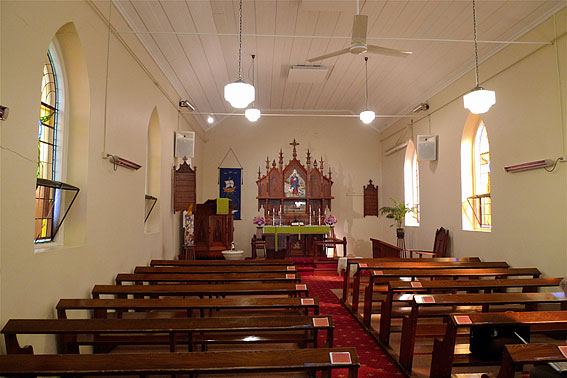
|
||
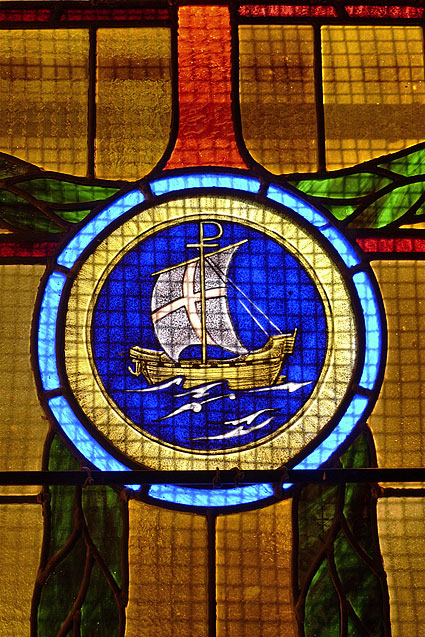 |
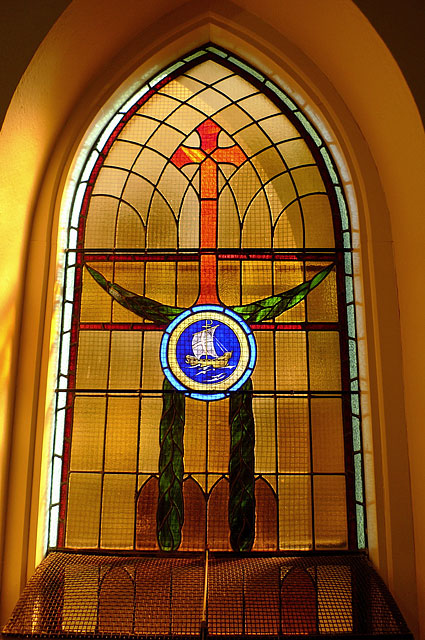 |
|
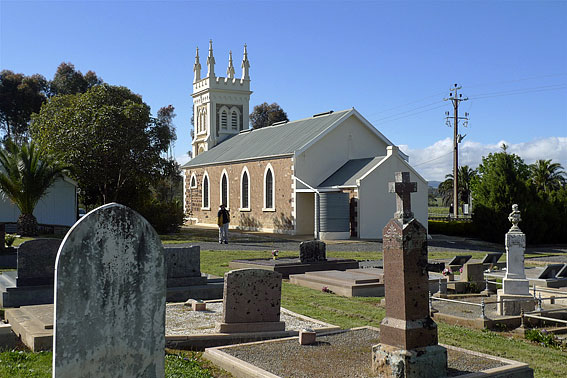
|
||
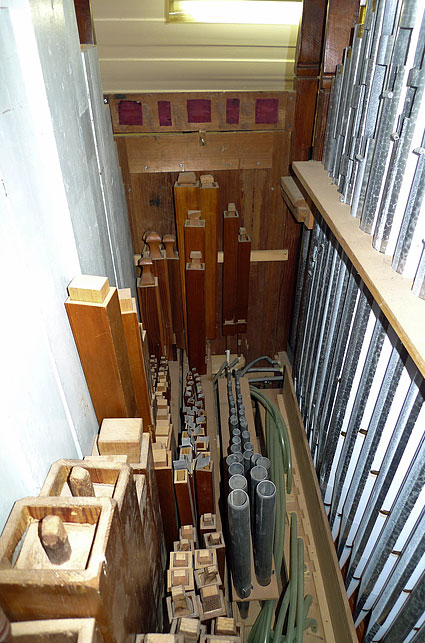 |
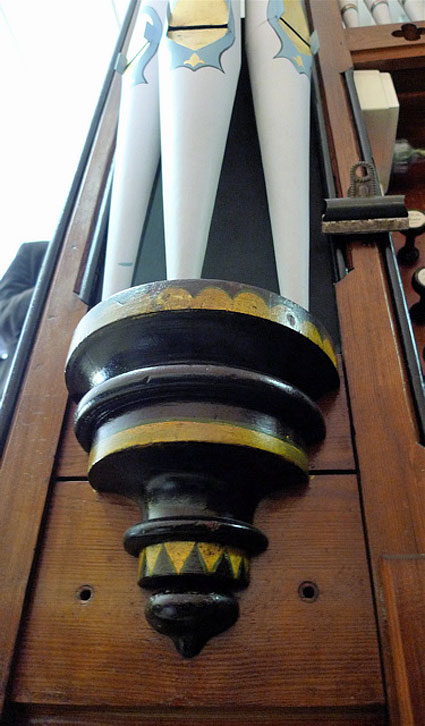 |
|
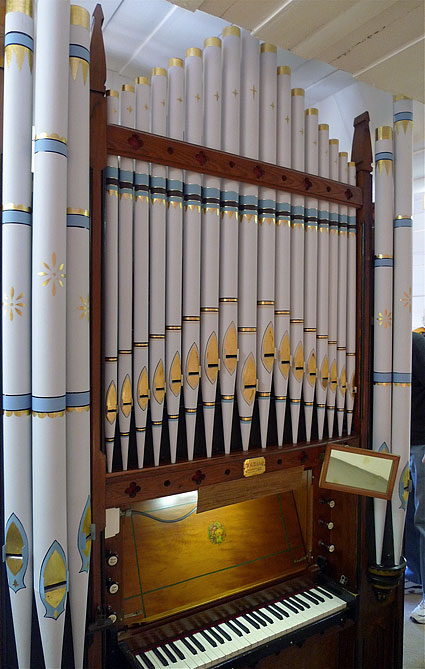 |
 |
|

|

|
|
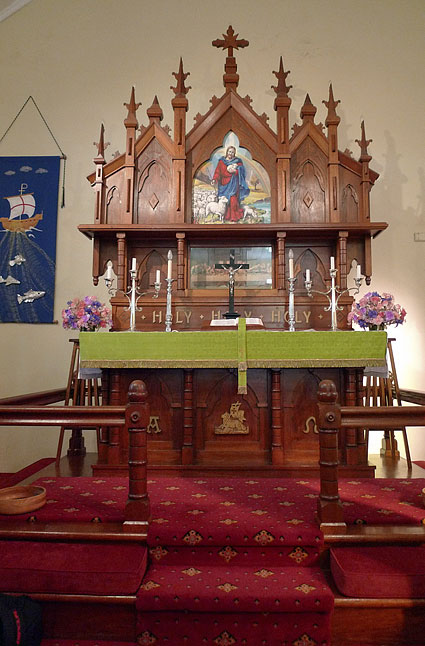
|
||
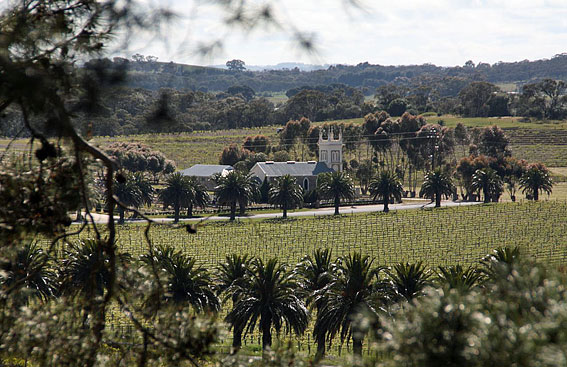
Photo: Simon Colvin (Oct 2009), from Seppelt Family Mausoleum |
||